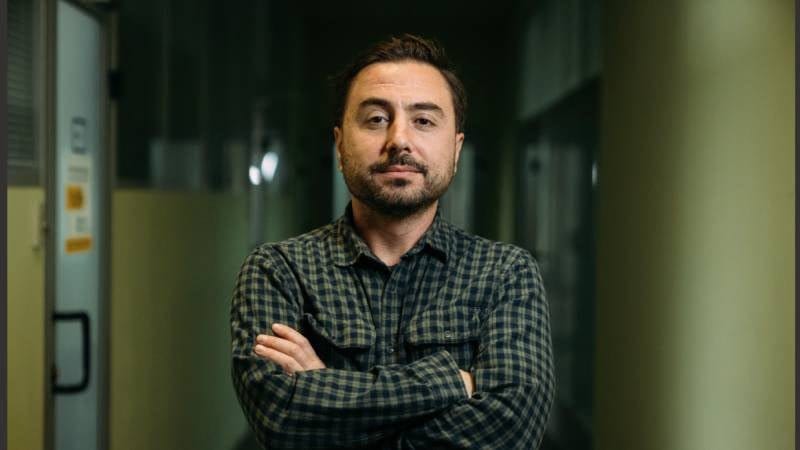Interview with Divia Director Dmytro Hreshko
The ghost of nature in Ukraine

Joshua Polanski interviews the director of Karlovy Vary entry Divia, a "hypnotic" doc about Russian aggression; the Ukrainian filmmaker reveals the secrets of filming with a drone, music as "the ghost of nature", Netflix support, and combining military service and creativity
Born in a small village in Transcarpathia (Western Ukraine), this cinematographer and filmmaker has signed seven movies, and he is now on his fourth feature film. He received multiple awards for his various works in events such as the Molodist Kyiv International Film Festival. His debut feature documentary Mountains and Heaven in Between (2021) screened internationally at Sheffield DocFest, FIPADOC, DOK Leipzig, Krakow Film Festival, and other festivals. He is a regular in industry and laboratory events such as Sunny Side of the Doc, DOK Leipzig Co-Pro Market, East Doc Platform, Baltic Sea Docs, CEDOC Market, and Eurodoc. His latest work Divia – a largely sensory and hypnotic doc about Russian aggression on Ukrainian soil, with a focus on the landscape – premiered in the Official Competition of the 59th Karlovy Vary International Film Festival.
Joshua Polanski – Who is Divia?
Dmytro Hshresko – Divia is my way of reimagining the deity of the Slavic goddess of nature. I was inspired by Greek and Roman mythology where there is the goddess of nature Minerva, and I wanted a Slavic counterpart, since the events take place in the territory of Slavic peoples.
JP – Where exactly in Ukraine did you film? How safe was it at the time?
DH – We filmed across Ukraine – from Kyiv and Chernihiv regions to Kharkiv, Donetsk, Mykolaiv, and Kherson. We started filming right after the territories were liberated – the de-occupation gave us a brief chance to document the destruction. We also used archival drone footage from friendly organizations to show national park areas already occupied by the Russians. Now such filming is nearly impossible: the front line has moved deeper into Ukrainian territory, and Russian forces control many of those areas. Drone attacks target not only soldiers but also journalists – recently, a French reporter was killed by a Russian drone despite wearing a bulletproof vest marked “press”. When we were filming it was a little safer, but there was a constant threat of shelling, sometimes a few hundred meters away. Plus, there are mines everywhere and it’s easy to step on them if you don’t look under your feet.
JP – What drone(s) did you use in the filmmaking process? What was that process like?
DH – We used a regular Mavic 3 Pro, as it was important to quickly launch it and film it before the Russians discovered it and started shelling. In general, filming with a drone in Ukraine is now prohibited, but we did it together with the military or deminers, and this protected us from friendly fire.